-
|
| MARINE
LIFE NEWS
Reports
of marine wildlife from all around the British Isles, with pollution incidents
and conservation initiatives as they affect the flora and fauna of the
NE Atlantic Ocean
27
June 2016
The
famous
Killer Whale, Orcinus orca,
named 'John Coe"
was spotted back off the extreme south-west coast of Ireland, seen by
Nick
Massett off Slea
Head, Dingle
Peninsula, County Kerry. This whale
is quite easily recognised by the large notch on the base of the trailing
edge of his dorsal fin, a feature which makes him unique and easily recognisable.
John
Coe is perhaps one of the best known Killer
Whales in the seas around the British Isles,
having been first photographed by
Dr. Peter
Evans, Sea Watch Foundation,
33 years ago, off the Scottish Hebrides back in 1983.
He was of adult age even back then, and as with many members of this ageing
remnant sub-pod of eight adults, he is old by any standards. Today
there are grave concerns for the future survival of this pod whose territory
extends into Irish waters. One major concern is that it is many years
since there has been any new additions to this group, and zero recruitment
means that this group will ultimately die off; something which would be
a great loss to our marine biodiversity.
21
June 2016
Bottlenose Dolphins,
Tursiops
truncatus, have been known since 2007
to attack
and kill Harbour Porpoises,
Phocoena
phocoena, in the Moray
Firth off north-east Scotland. However, this action is rarely captured
on camera as it occurs when the dolphin
tosses a young porpoise
in the air.
Bottlenose
Dolphins
of the Moray Firth |
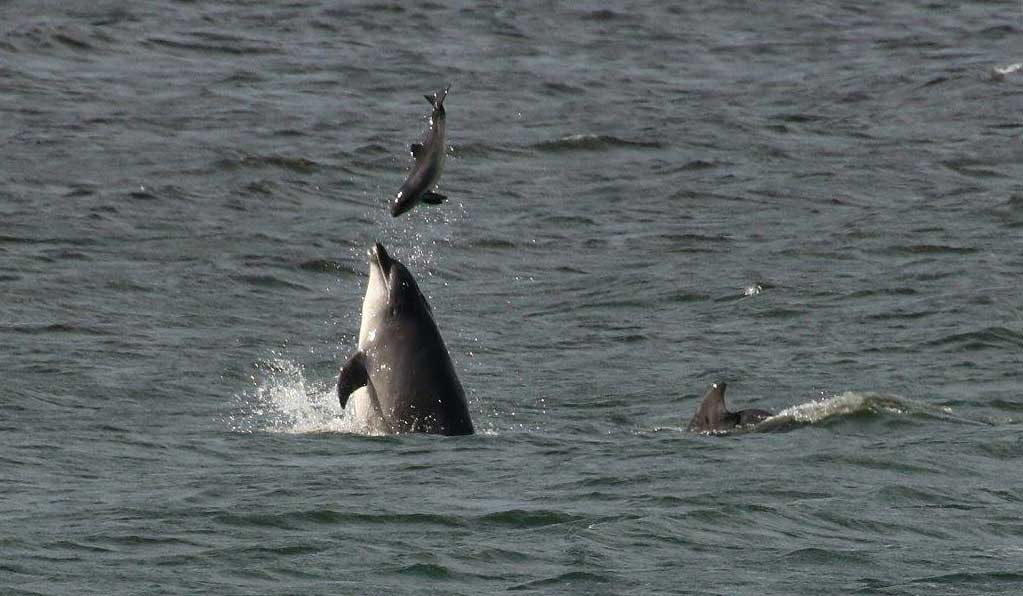 |
18
June 2016
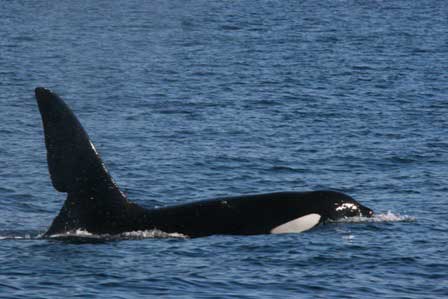 |
A
famous Killer Whale, Orcinus orca,
named 'John Coe",
distinguished by a large notch in its dorsal fin, was video-filmed off
west of the coast of Mull
swimming past the 'Cairns
of Coll', Inner Hebrides, Scotland. 'John
Coe" is the alpha male of the 'Hebridean
Community' of Killer Whales and has also been seen off Ireland and
Wales over the two decades, first recorded by its individual name in 1992.
Click
on the image
for the video recording.
|
Famous
Killer Whales (Hebridean Whale & Dolphin Trust)
June
2016
Basking Sharks,
Cetorhinus
maximus, make their annual summer pilgrimage
to the seas of the western coast of Scotland. The first image is a still
from aerial footage in calm seas off the Hebrides on 12
June 2016. The second still (from a video)
photograph shows a 3 metre long juvenile Basking
Shark with an adult. Click
on the images for the video recordings.
FORUM
NEWS
Marine Wildlife
of the North-east Atlantic Ocean Mailing Groups
.jpg)
Marine
Wildlife of the North-east Atlantic Ocean
Yahoo
Group
New
Group:
http://uk.groups.yahoo.com/group/Glaucus

British
Marine Life Study Society
facebook
Page:
https://www.facebook.com/groups/glaucus/
This
is designed for quick less important chatty news items. Photographs can
be uploaded quickly which is only possible on the Yahoo Group by going
to the web page.

Images can be
uploaded to flickr.
http://www.flickr.com/groups/glaucus/
Wet
Thumb (Marine Aquariology) Forum Link


|
Lots
of marine wildlife reports from Shetland on facebook
Photographs
include undersea, sea mammals and birds.
Click
on the image to connect |

All
reports by Andy Horton unless the credits are given
to
other observers or reporters.
Cornish
Marine Wildlife (Ray Dennis Records) 2009
|
PICTURE
GALLERY
Each
month, at least one special marine image will be published from images
sent to the BMLSS. This
can be of the seashore, undersea world or any
aspect of the marine natural world, especially the underwater life, but
not restricted to life beneath the waves. Topical inclusions may be included
instead of the most meritorious, and images will be limited to the NE Atlantic
Ocean and adjoining seas, marine and seashore species and land and seascapes.

Moon
Jellyfish
Aurelia
aurita
Photograph
by David Hall
Common
Jellyfish (also called Moon Jellyfish), Aurelia
aurita, do not sting humans.
The threadlike tentacles around the edge of the bell can sting, and may
occasionally catch small swimming animals for food, but their stings -
like minute harpoons fired by springs - are not powerful enough to pierce
our thick skin. They feed mostly by trapping microscopic plankton in a
film of mucus which flows over the surface of the bell and is picked off
as it reaches the edges by the thick mouth tentacles underneath. They swim
by pulsing the bell, pushing themselves slowly forwards through the water.
Inside the top of the bell you can see four rounded pinkish masses, which
are the gonads.
Script
by Jane Lilley
Moon
Jellyfish are found all around the British
Isles and all the warmer and temperate oceans of he world. They are generally
found close to the shore and some populations maintain their lief cycle
in enclosed harbours.
BMLSS
Moon Jellyfish
Cnidaria
of the NE Atlantic
flickr

9-armed
Common Starfish
Asterias
rubens
Photograph
by Keith Summerbell
This
most extraordinary Common Starfish, Asterias
rubens, has none identical arms of equal length. It was photographed
in the remote Loch
Ewe, a fjord
on mainland Scotland in the north-west bordering the North Minch.
The
most likely explanation is that the extra arms grew as a result of an injury
when he starfish was small, but then the arm lengths may be uneven. Have
you encountered a multiple arms starfish before?
Loch
Ewe forms part of the larger Wester
Ross Marine Protected Area where flame shell beds, maerl beds and northern
feather
star aggregations occur in the mosaic of sea lochs, bays and near shore
island channels.
This
complex landscape is a legacy from the end of the last ice age, when the
ice sheet that once covered most of Scotland retreated.
Wester
Ross MPA
Marine
Protected Areas (MPAs) are recognised globally as one way to support
our marine environment. A well managed network of MPAs will protect important
marine habitats and species, deliver benefits for our marine environments,
support coastal communities, help sustain marine industries, and provide
for recreational uses.
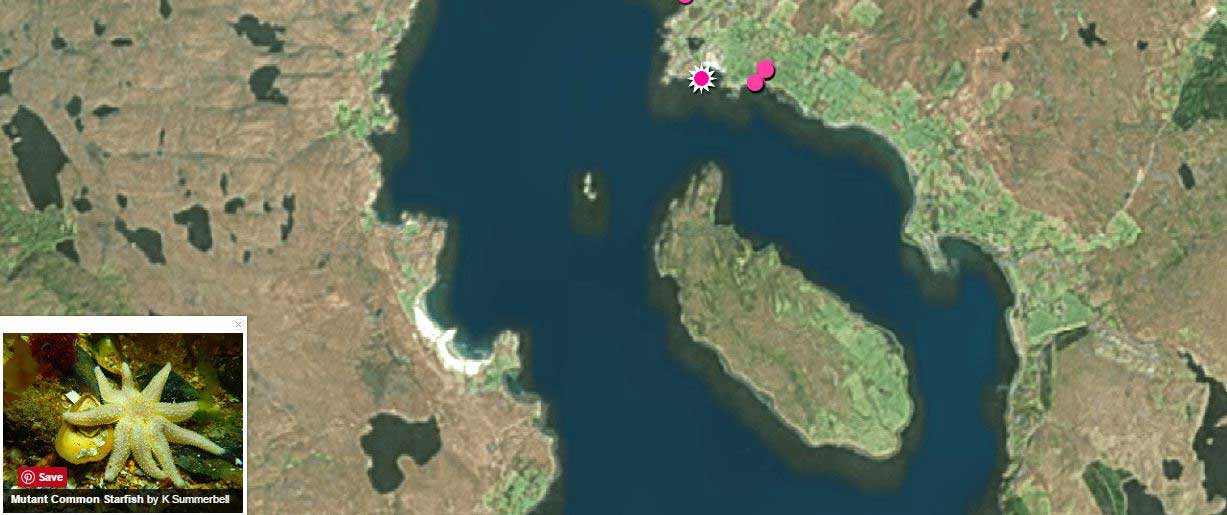
Location
in Loch Ewe
Google
Maps Location (Link)
Starfish,
Brittlestars and Feathers
(by
Keith
Summerbell)
Echinodermata
of the NE Atlantic
flickr
Click
on the images for the original photographs or links to more images
flickr
MARINE
LIFE of the NE Atlantic GALLERY
Shorewatch
Biological Recording
Gallery
---------------------------------------------------------------------------------------------------------------------------------------------------------------
Shore
Topography Series
The
name of the particular coast should be included and any other interesting
information including the grid reference, if known. Print photographs can
be included in Exhibitions and on the BMLSS Web
Sites and electronic publications.
Electronic
images in *.jpg
format can also be considered for the web site. They should not exceed
1 Mb in size.

Sunset
over Loch Ewe
from
Photograph
by Noel Davies
Loch
Ewe is a 10 miles (16 km) long sea loch in the remote region of Wester
Ross in the northwest highlands of mainland Scotland.
It
contains the Isle of
Ewe of 760 acres that rises to 72 metres (236 ft) above loch level.
Mellon
Charles is a small village about 3 miles north west of Aultbea
on the eastern shore of Loch Ewe.
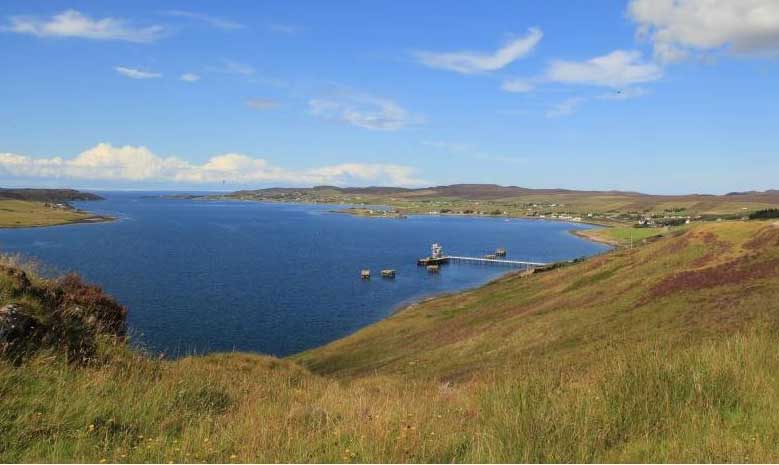
Pier
at Loch Ewe
from
Photograph
by Jonathan Carrick
View
from the south of the north facing loch that opens into the North Minch
and has provided a sheltered and protected haven for maritime and naval
shipping from ancient times up to and including the present day.
70
years ago during World War II, this sea loch was the gathering point for
cargo ship convoys prior to setting sail for Russia. Escorted by allied
warships, the ships would ply the treacherous seas of the North Atlantic
taking supplies to Murmansk and Archangel to support the Russian forces
against Germany. The last convoy sailed from Loch Ewe on the 30 December
1944. Altogether 481 merchant ships and over one hundred naval escort vessels
left Loch Ewe for Russia in a total of nineteen convoys. For many hundreds
of men who made the ultimate sacrifice, the cold grey water of the North
Atlantic is their resting place. For these men the enfolding arms of Loch
Ewe and the outer isles fading in the distance was the last sight of land
they had, before the Russian convoys exacted their terrible price paid
in human lives.
Loch
Ewe still has some military significance with the refuelling pier on the
lower right still being used to refuel Naval ships.
Wartime
Loch Ewe and Shipwreck Incident
Geograph:
Loch Ewe
Click
on the images for the original photographs or links to more images

flickr
British
Coastal Topography
.jpg)
facebook
British
Coastal Topography
----------------------------------------------------------------------------
First
enquiry by EMail
to Glaucus@hotmail.com

-----------------------------------------------------------------------
Photographers
submitting pictures should indicate if they wish them to be considered
for inclusion as confirming permission takes work and time and can delay
publication of the news bulletins.

Click
on the album for more links (On-line link)
|
| PUBLIC
AQUARIA NEWS |
| Public
Aquaria List |
| CETACEAN
NEWS |
|
? What
to do if you find a stranded whale or dolphin ?

|
If
you find a LIVE stranded or injured whale or dolphin on the beach you must
send for help QUICKLY. A whale or dolphin stranding is an emergency and
the speed of response by a professional rescue team is perhaps the most
crucial factor in determining whether or not an animal can be returned
to the sea alive.
|
ENGLAND
|
WALES
|
SCOTLAND
|
|
0300 1234
999
|
0300 1234
999
|
0131 339
0111
|
|
CORNWALL
|
JERSEY
|
GUERNSEY
|
|
0845 201
2626
|
01534 724331
|
00 44 1481
257261
|
Would you know what to
do if you found a whale stranded on a beach?
Each year anywhere between
five and 50 whales, dolphins and porpoises are washed up on Britain's beaches.
British
Divers Marine Life Rescue, a volunteer charity, was set up in 1998
to rescue them.
BBC
News Report
LINK
TO THE STRANDINGS PAGE
|
|
PUBLICATIONS
&
WEB PAGES
BOOKS
PUBLICATIONS
NEW
BOOKS

Shallow Seas (Collins
New Naturalist Library)
by
Peter Hayward (Author)
The
Marine World: A Natural History of Ocean Life

The Marine World
Includes
sections on all but the most obscure marine groups, covering invertebrate
phyla from sponges to sea squirts, as well as plants, fungi, bacteria,
fish, reptiles, mammals and birds
Incorporates
information on identification, distribution, structure, biology, ecology,
classification and conservation of each group
by:
Frances Dipper (Author), Marc Dando (Illustrator), Mark Carwardine (foreword)
544
pages, 1500+ colour photos, colour & b/w illustrations, colour tables
Wild
Nature Press
Click
on the book pictures for more information
The
Essential Guide to Beachcombing and the Strandline
This
richly
illustrated guide will become a steadfast companion for beach visitors
wishing to identify what the sea washes up
By:
Steve Trewhella (Author), Julie Hatcher (Author)
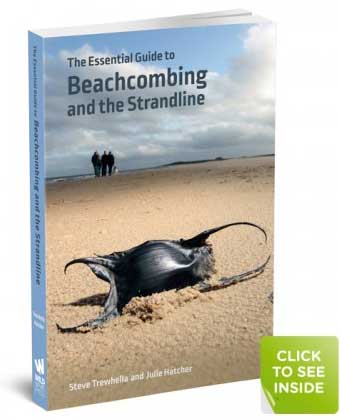
304
pages, colour photos, b/w illustrations
Wild
Nature Press

Fish Atlas of
the Celtic Sea, North Sea, and Baltic Sea
Based
on international research vessel data
Author:
edited by Henk J.L. Heessen, Niels Daan, Jim R. EllisPrice: € 79,50
An
in-depth reference work on marine fish, this is the first complete overview
of all marine fish species found in the North Sea, Baltic Sea, and Celtic
Sea. Whereas European research mainly focuses on species of commercial
interest, this atlas documents current data of all Western European fish
species caught in the period 1977 to 2013.

ESSENTIAL PURCHASE
*****
----------------------------------------------------------------------------------------------------------------------------------

Encyclopaedia
of Marine Life of Britain and Ireland
http://www.habitas.org.uk/marinelife/index.html?item=about
Marine
Fauna of Norway
http://www.seawater.no/fauna/e_index.htm

WET
THUMB (Marine Aquariology)
EFORUM
PAGE
BMLSS:
Marine Life Articles in Publications (Link)
|
SOCIETY
INFORMATION
The
British Marine Life Study Society are responsible for producing the journal
GLAUCUS,
which is the first publication exploring the marine life of the seas surrounding
the British Isles available to the general public. In
future, I expect the publication to be in an electronic format.
-------------------------------------------------------------------------------------------------------------------------
EMail Address
 EMail
address for messages to the British Marine Life Study Society EMail
address for messages to the British Marine Life Study Society
----------------------------------------------------------------------------------------------
Membership 2016
Please
join the facebook
group for free. Formal membership of the Society has ceased. Back
copies of previous issues are still available.
|
|
Bulletin
Details
For
technical reasons, TORPEDO is no longer being sent out by EMail. It is
simply easier to view the bulletins on the web pages.
Subscribe/Unsubcribe
http://groups.yahoo.com/group/BMLSS-Torpedo
The
Bulletin is designed to be viewed on Internet Explorer using medium fonts
at a resolution of 1024 x 768.
Viewing
should be possible on Mozilla and other browsers. |
28 June 2016
|
Copyright
2016 ©
British Marine Life Study Society
---------------------------------------------------------------------------------------------------------------------------------
Compiled
on Netscape Composer 4.6 and other programs
|

